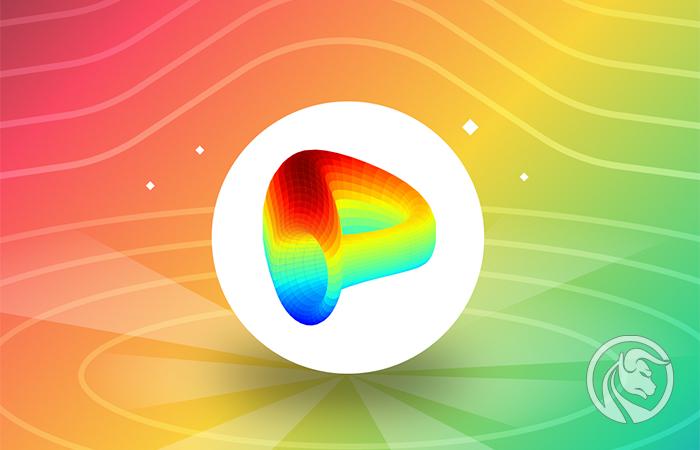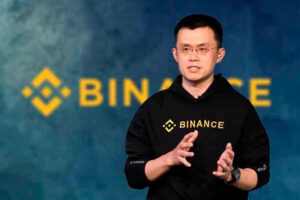Curve DAO (CRV) - deposits in cryptocurrencies with a profit of 730% in a year
DAO Curve (CRV) is another decentralized finance (DeFi) project that is taking the world by storm blockchain. The principle of operation is simple - it is a platform that allows you to trade cryptocurrencies, but focuses only on stablecoins, i.e. tokens reflecting the valuation of fiat currencies. It turns out that it enjoys great interest.
We continue the cycle of the Forex Club portal, in which we analyze and describe the largest, highest-valued, most interesting, most developmental, advanced and also the most controversial cryptocurrency projects around the world. Today it's time for Curve DAO - a DeFi (decentralized finance) project that has found its niche in the blockchain world.
Who created Curve DAO
The white paper was already published in November 2019. The creator of this cryptocurrency is considered to be Michael Egorov, already operating in the blockchian industry. He is, inter alia, the owner of NuCypher, which has created applications on the Ethereum network that enable data encryption, which are available only to selected users, while not revealing their identity to third parties.
How Curve works
Curve is a decentralized token exchange platform, but only stablecoins, i.e. cryptocurrencies that correspond to fiat currencies, can only be traded on it. It wins with the competition, among others low fees and fast transaction times.
How can you make money on it? One of the ways is to provide liquidity to the pool, i.e. stacking cryptocurrencies in the network. As a result, anyone can earn interest, which in turn is paid by all network users by paying transaction fees. The protocol also provides tokens to the pool Yearn. Finance and Compoundwhich increases the earnings of stackers.
Curve, however, is not a classic cryptocurrency exchange, on which we can see the purchase and sale offers and on their basis the rate is determined. Here, the cryptocurrencies are kept in the appropriate proportions by the protocol, which reduces fluctuations in exchange rates and practically prevents their rapid changes, while the possibility of exchanging a huge number of tokens. Thanks to this, even in the case of a growing interest in a cryptocurrency, its rate will not increase quickly and significantly, while still maintaining all the features of a stablecoin.
The issue and rights of CRV token holders
The native Curve token was created in 2020. 60% of the first issue was allocated to users who blocked their cryptocurrencies on the platform. 30% went to investors and the Curve team, and the rest to employees and as a reserve for community projects.
Token holders have the right to vote on proposed changes to the protocol - proportional to the number of tokens held. However, the voting right also increases the time of holding tokens, so those that have been kept for a long time are "valued" much better. This obviously affects the valuation of the Curve cryptocurrency, which grows with each successive payment of staking earnings. They are paid in CRV, and most stackers add them to the pool, so increasing demand and a controlled supply increase the cryptocurrency rate.
It therefore seems that if the market for stablecoins, as well as loans granted in them, grows (and there is no indication that it would be otherwise), the CRV rate may climb to the next price peaks just as quickly.
Curve cryptocurrency quotes
The CRV token is currently available on 50 cryptocurrency exchanges around the world. As of October 28, 2021, 358 are traded out of a target of 709 units valued at $ 182 per unit. This translates to a capitalization of more than $ 1 billion. The peak of trading took place on September 521, 949, when USD 991 was paid for each CRV token. Over the last 4,87 months, the token has increased by 1,7%.






















![Forex Club – Tax 9 – Settle tax on a foreign broker [Download the Application] Forex Club - Tax 9](https://forexclub.pl/wp-content/uploads/2024/02/Forex-Club-Podatek-9-184x120.jpg?v=1709046278)
![Trading View platform – solutions tailored to the needs of traders [Review] trading view review](https://forexclub.pl/wp-content/uploads/2024/03/trading-view-recenzja-184x120.jpg?v=1709558918)
![How to connect your FP Markets account to the Trading View platform [Guide] fp markets trading view](https://forexclub.pl/wp-content/uploads/2024/02/fp-markets-trading-view-184x120.jpg?v=1708677291)
![How to invest in ChatGPT and AI? Stocks and ETFs [Guide] how to invest in chatgpt and artificial intelligence](https://forexclub.pl/wp-content/uploads/2023/02/jak-inwestowac-w-chatgpt-i-sztuczna-inteligencje-184x120.jpg?v=1676364263)




![Izabela Górecka – “Success on the market depends not only on knowledge, but also on emotional stability” [Interview] Izabela Górecka - interview](https://forexclub.pl/wp-content/uploads/2024/04/Izabela-Gorecka-wywiad-184x120.jpg?v=1713870578)
![WeWork – the anatomy of the collapse of a company valued at $47 billion [WeWork, part II] wework bankruptcy story](https://forexclub.pl/wp-content/uploads/2024/04/wework-bankructwo-historia-184x120.jpg?v=1711729561)
![Adam Neumann – the man who screwed up Softbank [WeWork, part AND] adam neumann wework](https://forexclub.pl/wp-content/uploads/2024/04/adam-neumann-wework-184x120.jpg?v=1711728724)




![The most common mistakes of a beginner trader - Mr Yogi [VIDEO] Scalping - The most common mistakes of a beginner trader - VIDEO](https://forexclub.pl/wp-content/uploads/2024/03/Scalping-Najczestsze-bledy-poczatkujacego-tradera-VIDEO-184x120.jpg?v=1711601376)
![Learning patience: No position is also a position - Mr Yogi [VIDEO] Scalping - Learning patience - No position is also a position - VIDEO](https://forexclub.pl/wp-content/uploads/2024/03/Scalping-Nauka-cierpliwosci-Brak-pozycji-to-tez-pozycja-VIDEO-184x120.jpg?v=1710999249)
![When to exit a position and how to minimize losses - Mr Yogi [VIDEO] Scalping - When to exit a position and how to minimize losses - VIDEO](https://forexclub.pl/wp-content/uploads/2024/03/Scalping-Kiedy-wyjsc-z-pozycji-i-jak-minimalizowac-straty-VIDEO-184x120.jpg?v=1710336731)


















Leave a Response